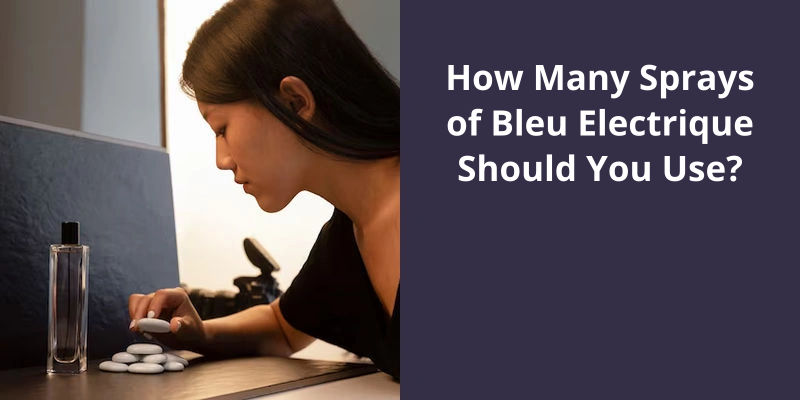Jazz Club Perfume, with its heady cocktail of tobacco, vanilla, and spicy undertones, is a versatile scent that can be layered with other fragrances to enhance its aromatic profile. When layering, first apply a base of a lighter, fresh scent like citrus or aquatic notes. Allow this to dry before applying Jazz Club to achieve a unique blend. This method prevents the fragrances from muddying each other and maintains each fragrance’s individual integrity. To extend the longevity of Jazz Club, consider pairing it with a scent that has similar base notes. This not only complements and elevates the perfume but also keeps your scent profile consistent throughout the day. Always remember to balance the intensity of the fragrances to avoid creating an overpowering scent. Test and experiment to find your own sublime perfume cocktail.

What to Layer Replica Jazz Club With?
When it comes to fragrance layering, there’s no limit to the possibilities. However, it’s important to find a scent combination that not only smells amazing but also complement each other. For jazz club lovers, consider layering replica Jazz Club with Tobacco Vanille by Tom Ford for a sophisticated and long-lasting scent.
Tom Fords Tobacco Vanille is a bold and intense scent that exudes class and luxury. It’s a blend of tobacco, vanilla, tonka bean, and warm spices that evoke a sense of relaxation and comfort. Meanwhile, replica Jazz Club by Maison Margiela is a sensual and warm fragrance inspired by the coziness of an old jazz club with notes of rum, tobacco, and vanilla.
When these two scents are layered, they complement each other beautifully. Jazz Club ramps up the tobacco notes of Tobacco Vanille, making it more intense and smoky. The addition of rum in Jazz Club also adds a boozy and sweet note to the overall scent. Wearing these two fragrances together will create a unique and mysterious aura thats perfect for anyone who wants to make a statement.
Apart from Tobacco Vanille, replica Jazz Club also pairs well with other scents such as Calvin Kleins Obsession for Men and Yves Saint Laurents La Nuit De Lhomme. Obsession for Men, with it’s spicy notes of cinnamon, nutmeg, and clove, complements the rum and tobacco notes of Jazz Club, creating a sophisticated and warm scent. Meanwhile, La Nuit De Lhomme with it’s sensual notes of cardamom, bergamot, and lavender, enhances the vanilla and tobacco notes in Jazz Club, adding a layer of sensuality to the overall scent.
Fragrance layering is a fun and creative way to elevate your scent game. Experimenting with different fragrances and finding the perfect combination can be a fun journey and a great way to express your individuality.
Tips on How to Layer Fragrances for Different Occasions and Seasons
- Start with a base layer of a scented lotion or body wash
- Add a light, fresh fragrance for daytime wear
- For evening events, layer on a stronger scent like an eau de parfum
- Consider seasonal scents like florals in spring and warm, spicy scents in fall and winter
- Experiment with mixing and matching different scents to create a unique fragrance combination
- Remember to apply fragrances to pulse points like wrists, neck, and behind ears for maximum impact
When it comes to perfume layering, there are some basic rules that should be followed to ensure a harmonious blend of scents. Mixing and matching fragrances can be a fun way to create your own unique scent, but it’s important to use caution and respect the guidelines. By applying the strongest fragrance first and avoiding overly complex scents, you can ensure that your layered perfume is balanced and delightful.
What Are the Rules for Layering Perfume?
It can create a jarring and confusing scent that can be unpleasant to others around you. Instead, try to layer complimentary fragrances that share similar notes or accords. Floral scents can be layered with other floral scents or with fresh scents like citrus or green notes. Woody or spicy scents can be layered with other woody or spicy scents or with warm, sweet notes like vanilla or amber.
Another important rule is to apply fragrances to pulse points and warm areas of the body. This will help the fragrance to develop and last longer. Common areas to apply perfume include the neck, wrists, inner elbows, and behind the ears. Some people also like to apply fragrance to their hair or clothing, but this can be a personal preference and may not work for all fragrances.
It’s also important to be aware of the concentration of each fragrance you’re layering. For example, if you’re layering two perfumes, both should either be eau de toilette or eau de parfum, not one of each.
When layering perfumes, it’s also important to remember that less is more. It can be tempting to add multiple layers of fragrance, but this can lead to an overwhelming scent that can be off-putting. Instead, start with a small amount of each fragrance and build up slowly if needed. This will help you to create a balanced and nuanced scent that won’t overpower the senses.
Finally, it’s important to be aware of the season and occasion when layering perfumes. Heavier, warmer scents are better suited for cooler weather and evening events, while light, fresh scents are better for warmer weather and daytime events. A good rule of thumb is to choose fragrances that match the mood and style of the occasion, and to be mindful of how your fragrance may impact others around you.
Tips for Layering Fragrances for Different Occasions (e.g. Work, Date Night, Special Events)
- Start with a fragrance-free base, such as unscented lotion or body oil.
- Layer with a light, fresh scent for daytime occasions, such as a citrus or floral scent.
- For work, opt for a more subtle scent such as a clean or powdery fragrance.
- To create a romantic atmosphere for date night, layer a musky or spicy scent.
- When attending special events, go for a bold scent such as a woody or oriental fragrance.
- Remember to always test the fragrances together before wearing them out to ensure they complement each other well.
Source: Perfume layering: what’s it all about? – Sylvaine Delacourte
If you’re looking to switch up your fragrance routine, experimenting with fragrance layering may be just the change you need. While there are many opinions on which fragrances pair well, one method is to combine scents with opposite notes on the fragrance wheel. It’s important, however, to avoid combining two powerful fragrances and instead opt for those with common notes. Here are some tips for successful fragrance layering.
Which Perfumes to Layer Together?
Perfume layering has become a popular trend lately as beauty enthusiasts are exploring new and unique fragrances. One way to mix and match perfumes is by combining scents with notes that are opposite on the fragrance wheel. The fragrance wheel is a tool that categorizes fragrances into different families based on their scent notes. When it comes to layering, combining perfumes from different families can create a harmonious and balanced scent.
Musk, amber, and woody notes are earthy, warm, and musky scents that are best paired with fruity and citrus perfumes. The contrast of the fresh, zesty top notes of citrus pairs perfectly with the woody, musky base notes, creating a unique fragrance blend. This combination is perfect for hot summer days when you want to smell fresh and fruity with a hint of warmth.
The result may be overpowering, and the scent may not blend well. Instead, opt for lighter scents or perfumes with a balance of top, middle, and base notes. Combining two contrasting scents with a balance of notes can create a perfect balance in the fragrance.
For example, if you’ve two perfumes with floral notes such as jasmine, they can create a beautiful floral arrangement when layered. Adding a third fragrance, such as lavender, can create a new and unique scent that blends well with the other two perfumes.
When mixing perfumes, it’s important to remember that less is more. Start with a small amount of each perfume, and test the scent on your skin before applying it all over your body. Layering can create a unique scent that’s tailored to your personal preferences, but it’s essential to find the right balance, so the scent isn’t overbearing.
Combining scents with contrasting notes, such as fruity and musky, can help to create a unique fragrance blend. Remember to keep it light and avoid overpowering scents, and opt for fragrances with a balance of notes. Consider combining perfumes with at least one common note between the two fragrances. With these tips, youre ready to create a beautiful, harmonious scent thats uniquely you.
Tips for Layering Perfumes for Different Occasions
- Start with a base scent that’s subtle and fresh
- Add a middle note that’s more complex and sophisticated
- Finish with a top fragrance that’s bold and memorable
- Layer fragrances with a similar theme or scent family
- Consider the occasion and environment when selecting scents to layer
- Apply each layer lightly and evenly
- Experiment with different combinations to find your perfect blend
- Don’t be afraid to mix and match different brands and types of fragrances
Conclusion
By layering different notes and fragrances, one can capture the essence of the jazz club scene and evoke feelings of sophistication, nostalgia and excitement. The possibilities are endless and the outcome is a signature scent that’s reflective of one’s individual personality and style.





